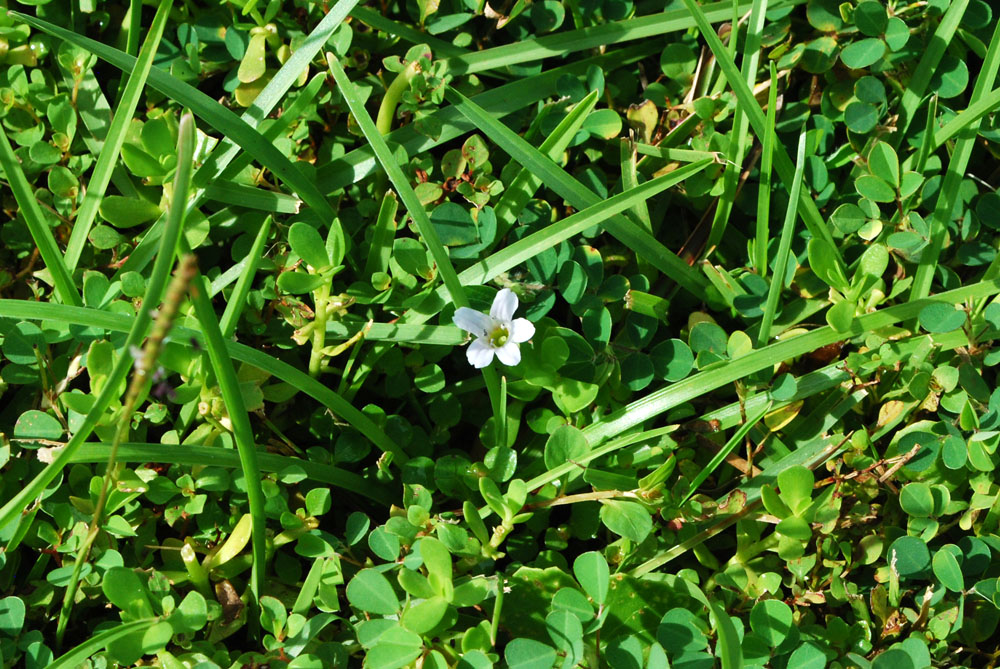Difference between revisions of "Bacopa monnieri"
Krobertson (talk | contribs) |
Laurenloria (talk | contribs) |
||
| Line 32: | Line 32: | ||
===Phenology=== <!--Timing off flowering, fruiting, seed dispersal, and environmental triggers. Cite PanFlora website if appropriate: http://www.gilnelson.com/PanFlora/ --> | ===Phenology=== <!--Timing off flowering, fruiting, seed dispersal, and environmental triggers. Cite PanFlora website if appropriate: http://www.gilnelson.com/PanFlora/ --> | ||
| − | It has been observed to flower and fruit in June.<ref name="FSU"></ref> | + | It has been observed to flower in June and July and fruit in June.<ref name="FSU"></ref><ref>Nelson, G. [http://www.gilnelson.com/ PanFlora]: Plant data for the eastern United States with emphasis on the Southeastern Coastal Plains, Florida, and the Florida Panhandle. www.gilnelson.com/PanFlora/ Accessed: 7 DEC 2016</ref> |
<!--===Seed dispersal===--> | <!--===Seed dispersal===--> | ||
<!--===Seed bank and germination===--> | <!--===Seed bank and germination===--> | ||
Revision as of 12:54, 7 December 2016
| Bacopa monnieri | |
|---|---|

| |
| Photo by Wayne Matchett, SpaceCoastWildflowers.com | |
| Scientific classification | |
| Kingdom: | Plantae |
| Division: | Magnoliophyta - Flowering plants |
| Class: | Magnoliopsida - Dicotyledons |
| Order: | Scrophulariales |
| Family: | Scrophulariaceae |
| Genus: | Bacopa |
| Species: | B. monnieri |
| Binomial name | |
| Bacopa monnieri (L.) Pennell | |

| |
| Natural range of Bacopa monnieri from USDA NRCS Plants Database. | |
Common name: Herb of grace
Contents
Taxonomic notes
Synonym: Bramia monnieri (Linnaeus) Drake
Description
Baccharis genus are dioecious, glabrous shrubs. They are rarely small trees. The leaves are alternate, fleshy, toothed or entire. The heads pedunculated or sessile, most of the time in 3-5 glomerules. The involucres are cylindric, 4-5 mm long, 2.5-3.5 mm broad. The bracts are imbricate, sometimes purplish in color, and obtuse. The flowers are discoid and yellowish in color. The nutlets are tan in color, lustrous, cylindric, 10-ribbed, glabrous, and 1.2-1.5 mm long. The pappus bristles are white to tan in color. The capillary is 7-10 mm long.[1]
Specifically for B. monnieri, the plant has no smell. The erect portion of the stem is 1-3 dm tall and is glabrous. The leaves are obovate in shape, 6-17 mm long, 3-8 mm wide, and only having a single vein. It is rare to see 2-3 veins. The internodes are longer than the leaves. The pedicel is longer than the subtending leaf. The bractlets are present. The largest sepals grow up to 5-7 mm long, and 3-4 mm wide. The corolla is white in color and sometimes tinged with blue. The corolla is rotate to regular, growing up to 8-10 mm long. The lobes grow to the same size as the tube. There are 4 stamens which are subequal. Flowers from April to frost.[1]
Distribution
Ecology
Habitat
In the Coastal Plain in Florida, B. monnieri has been found in shallow water of a shaded ditch; with Eleocharis flavescens in muck of small floating island in a ditch; sand fill near a salt marsh; and shallow brackish water.[2]
Phenology
It has been observed to flower in June and July and fruit in June.[2][3]
Pollination
The following Hymenoptera families and species were observed visiting flowers of Bacopa monnieri at Archbold Biological Station[4]: Halictidae: Lasioglossum pectoralis, L. puteulanum
Megachilidae: Megachile brevis pseudobrevis, M. georgica
Conservation and management
Cultivation and restoration
Photo Gallery
References and notes
- ↑ 1.0 1.1 Radford, Albert E., Harry E. Ahles, and C. Ritchie Bell. Manual of the Vascular Flora of the Carolinas. 1964, 1968. The University of North Carolina Press. 938. Print.
- ↑ 2.0 2.1 Florida State University Robert K. Godfrey Herbarium database. URL: http://herbarium.bio.fsu.edu. Last accessed: July 2015. Collectors: Loran C. Anderson, Karen MacClendon, Travis MacClendon, R.A. Norris, P.L. Redfearn Jr., Nia Wellendorf. States and Counties: Florida: Calhoun, Jefferson, Taylor, Wakulla. Compiled by Tall Timbers Research Station and Land Conservancy.
- ↑ Nelson, G. PanFlora: Plant data for the eastern United States with emphasis on the Southeastern Coastal Plains, Florida, and the Florida Panhandle. www.gilnelson.com/PanFlora/ Accessed: 7 DEC 2016
- ↑ Deyrup, M.A. 2015. Database of observations of Hymenoptera visitations to flowers of plants on Archbold Biological Station, Florida, USA.